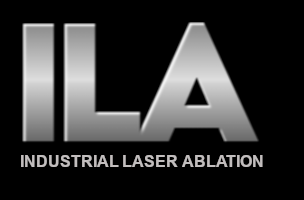How does laser ablation cleaning work?
Laser cleaning works by directing a high-energy laser beam onto the surface to be cleaned. The laser energy is absorbed by the contaminants or unwanted materials, causing them to vaporize or ablate, leaving behind a clean surface. The process is non-contact, minimizing the risk of surface damage, and the laser parameters can be adjusted to tailor the cleaning process to different materials and cleaning requirements.
What types of surfaces can be cleaned?
Metal surfaces: Laser cleaning effectively removes rust, paint, oxides, grease, and other contaminants from metals such as steel, aluminum, copper, and more.
Stone and concrete: Laser cleaning can remove graffiti, dirt, stains, and coatings from stone, concrete, or brick surfaces.
Other: Generally, most hard surfaces are candidates for laser cleaning including woods, ceramics and some plastics.
Will laser cleaning damage the substrate (base material)?
Laser cleaning is generally safe for the substrate being cleaned when performed correctly. The process can be customized by adjusting laser parameters to ensure minimal impact on the substrate. However, it is important to consider factors such as material properties, surface conditions, and the expertise of the operator to prevent potential damage. With proper evaluation, testing, and adherence to recommended guidelines, the risk of substrate damage can be minimized.
Do fumes from laser cleaning impact the environment?
Laser cleaning is known for its environmentally friendly nature, and it produces minimal fumes compared to traditional cleaning methods. However, it’s important to note that certain materials being cleaned by laser can potentially generate fumes or vapors depending on their composition.
The potential environmental impact of fumes generated during laser cleaning can vary depending on the specific materials involved. For example, if the laser is used to clean surfaces with coatings or contaminants that may release harmful substances when heated, such as certain paints or coatings containing volatile organic compounds (VOCs), there could be a potential for environmental impact.
Ventilation systems or exhaust controls can be employed to capture and remove any fumes or vapors that may be generated during the cleaning process. By ensuring adequate ventilation and employing appropriate safety measures, any potential environmental impact can be minimized or eliminated.
Can laser cleaners texture metal surfaces?
Yes, laser cleaners can be used to texture metal surfaces by selectively ablating material in a controlled manner. It is often utilized to improve paint adhesion.
Are there any limitations on the types of surfaces that can be cleaned?
Laser cleaning is effective for a wide range of surfaces, but there are some limitations to consider:
- Materials that are highly sensitive to heat may not be suitable for laser cleaning.
- Highly reflective surfaces, like mirrors or polished metals, may pose challenges.
- Dark or absorbing surfaces may require higher laser power or multiple passes for effective cleaning.
- Complex shapes or recessed areas may impact cleaning uniformity.
- The type and composition of coatings or layers on the surface can affect cleaning results.
Is laser cleaning safe?
Lasers of all types are heavily regulated in Canada due to their ability to cause permanent injuries to people and significant damage to property when incorrectly used. Risks involve eye, skin, inhalation, electrical, chemical and fire hazards.
In British Columbia, Worksafe BC sets out training and practical measures that when adhered to manage risk of personal injury and property damage. ILA has incorporated all requirements and recommendations into their safety program along with additional measures to establish a safety-first culture.
How does laser cleaning compare to other methods?
Laser cleaning is highly effective in removing contaminants from various surfaces. The laser energy is focused on the target area, causing the contaminants to vaporize or disintegrate. It provides a precise and controlled cleaning action, ensuring thorough removal of contaminants.
Laser cleaning is often faster and more efficient than traditional cleaning methods. It eliminates the need for manual scrubbing or abrasive techniques, which can be time-consuming and labor-intensive.
Laser cleaning is a non-contact and non-abrasive process. It does not involve physical contact with the surface, which means there is minimal risk of scratching or damaging delicate materials.
Laser cleaning is considered an environmentally friendly cleaning method. It does not involve the use of harsh chemicals or generate hazardous waste materials, reducing the environmental impact.
Laser cleaning offers precise control over the cleaning process. The intensity and focus of the laser beam can be adjusted according to the specific requirements of the cleaning task. This allows for selective cleaning, where only the contaminants are removed.
While laser cleaning has many advantages, it is important to note that its suitability may vary depending on the specific cleaning requirements and the type of surface being cleaned.

If you are interested in our services,
looking to arrange a demonstration,
or simply have a question…
Feel free call or send us a message.
Phone: 778-890-1570
Contact Us
